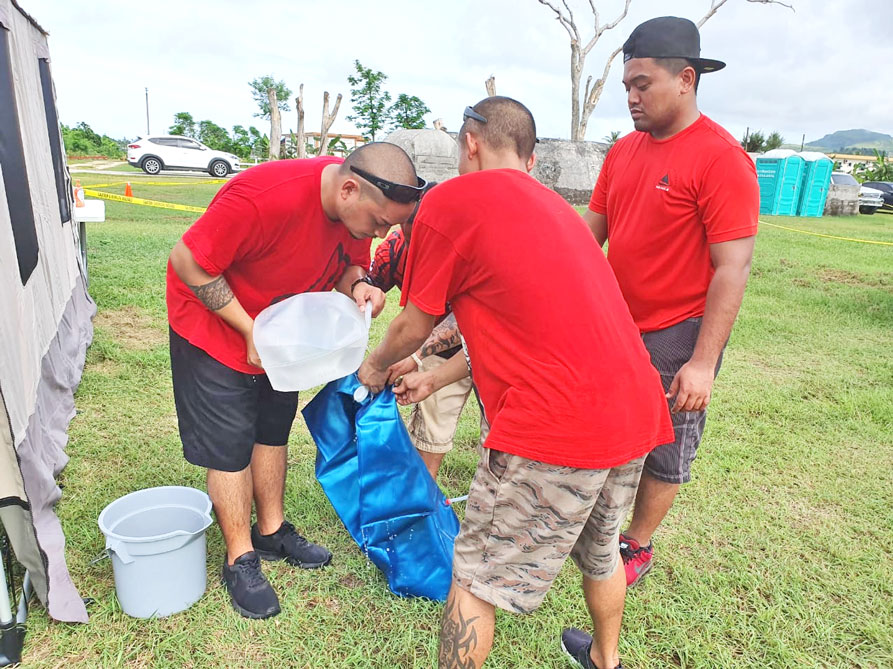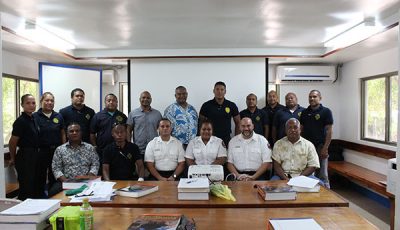Earthquake scenario caps EMT training
Imagine a strong earthquake hitting Tinian and the newly-formed CNMI Emergency Medical Team being sent to the island to respond to the disaster. That was the idea behind a simulation exercise that was conducted last Friday at the airport field on Saipan to test the team’s response efforts, to cap the team’s training under the auspices of the World Health Organization and Team Rubicon, a disaster response group made up of military veterans.
WHO Health Cluster coordinator Sean Casey told Saipan Tribune that the formation of the CNMI EMT—consisting of individuals from the Commonwealth Health Care Corp. and the Department of Fire and Emergency Services—builds on the wishes of the CNMI to be able to respond quickly and effectively with high quality care in the event of a natural disaster.
“CHCC decided to strengthen its capacity and clinical response in particular, to be able to respond to any kind of disaster or outbreak, and be fully self-sufficient” Casey said.
Although the nature of all disasters may vary as earthquakes may continue with aftershocks and possibly a tsunami, Casey said it is best for the team to be prepared to respond swiftly. That includes being able to treat patients while ensuring hygiene control, plus infection prevention and control.
This exercise was portrayed to be as real as possible, with volunteers from the United Filipino Organization portraying themselves as patients injured from the earthquake. The CNMI EMT will be a Type 1 EMT, which will provide clinical services during the daytime and afternoon hours in the event of a natural disaster.
Team Rubicon’s Dennis Clancey believes that the CNMI EMT is ready. “I think the people of the CNMI really thought about all the various skills they would want to have on a small team where members are [capable] of performing multiple tasks,” Clancey said.
He noted that the CNMI EMT learned how to assemble tents, create a sanitized mobile medical clinic, and other necessary skills in the event of a disaster.
Clancey is no stranger to the CNMI as he assisted the relief efforts after Super Typhoon Yutu in 2018, being the reconnaissance team leader for Team Rubicon.
CHCC Public Health and Hospital Emergency Preparedness Program director Warren Villagomez noted that this is the first step for the CNMI EMT, as getting the verification of the team’s formation is essential to disaster response. He said the EMT intends to continue to work with the UFO and the Public School System to create an increased amount of support for the EMT. One of the shortfalls that the CNMI EMT is currently facing is the shortage of personnel and, in order to address it, he said that they will need to enlist individuals from the UFO and possibly PSS in the near future to help the EMT in the event of disasters.
The CNMI EMT is the first EMT created in a U.S.-affiliated territory within the WHO’s Pacific jurisdiction. Type 1 EMT’s deal with outpatient cases and operates in daylight hours while being completely self-sufficient, and can be fixed on a certain location or target numerous locations.



























